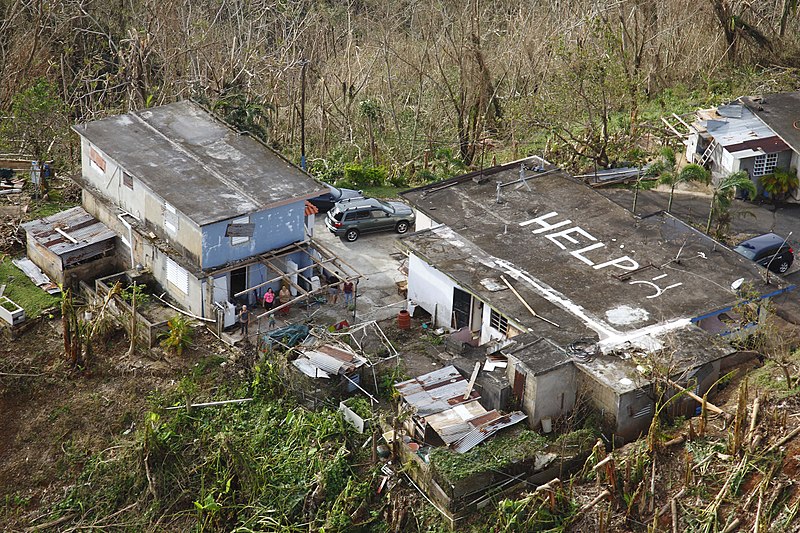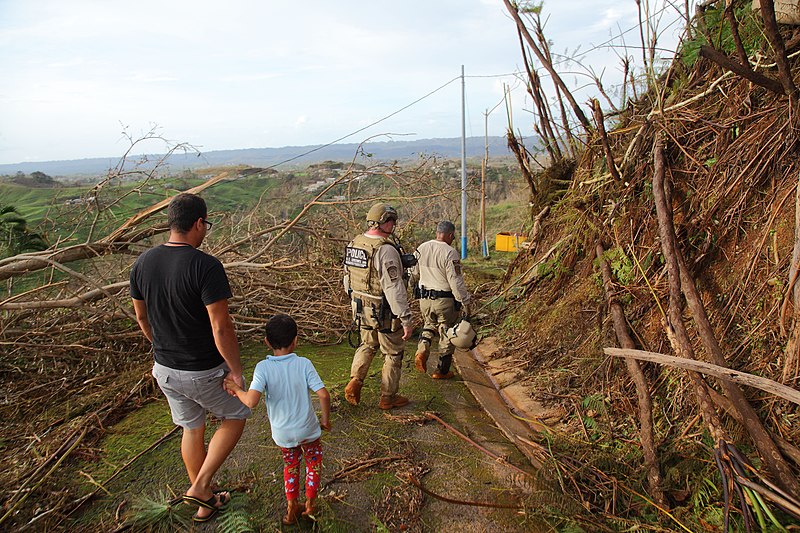
There’s a lot that goes on every day around the world. While events used to dominate the national news cycle for weeks or even months, the rapid pace of information sharing has shortened this cycle to days or in some cases only hours. The unfortunate result is that our news inundation often leads to true crises slipping out of our collective conscious before we’ve even had time to grasp their impact.
The current humanitarian crisis that our nation is facing in Puerto Rico is the most current example. Within weeks, our shores were slammed with not one, not two, but three cataclysmic hurricanes. By the time that Maria reached Puerto Rico, as a country we were saturated with news about Hurricanes Harvey and Irma. Thousands of people have been affected by these terrible events and are trying to rebuild their lives. I personally have a close connection with those affected in Miami, as findCRA’s Board of Directors and many of our long-term clients and friends live there. But Puerto Rico faces a unique challenge.
At last estimates, Hurricane Maria could be as much as a $95 billion storm for the island.[1] In a stable economy, this would be devastating. But Puerto Rico has been struggling with a recession for the past eleven years, has lost 10 percent of its population[2] and in May, filed the largest municipal bankruptcy in U.S. history.[3] Ricardo Rosello, the Governor of Puerto Rico, has declared, “this is, without a doubt, the biggest catastrophe in modern history for Puerto Rico.”[4]

Today, rebuilding Puerto Rico seems like a distant challenge. Its citizens are dealing with more basic needs, struggling to find key necessities like food, water, fuel and shelter. Over a week after the hurricane’s landfall, the
island still has no power outside of high-priority buildings like hospitals. Further complicating the matter is the simple geographic fact that Puerto Rico is an island, and while aid is slowly reaching the country, it’s a massive undertaking. Lest we forget, Puerto Rico is home to nearly 3.5 million U.S. citizens. They are protected by the same rights as any other American and have been since 1917.
So, what can banks do?
Federal agencies guiding the banking industry including the FDIC, OCC, Federal Reserve, HUD, CFPB, SBA and more are actively communicating steps that bankers can take to support communities affected by the hurricanes, from working with affected consumers to waiving fees to participating in rebuilding. Surviving the disaster has immediate needs, but the impacts can be felt for years later as homes must be rebuilt, employers must be encouraged to return and finances must be re-established.
The Community Reinvestment Act specifically addresses major disaster areas. In the most recent CRA Questions and Answers updated in 2016, the banking regulatory agencies address what to do in these “designated disaster areas.”[5] The regulators define a designated disaster area as a major disaster area designated by the Federal government, and point to the list of major disaster areas maintained by FEMA.[6] All of the recent hurricane affected areas, including Puerto Rico, are on this list. So are dozens of other communities that have been affected by disasters in 2017.
The guidance goes on to clarify that banks that support revitalization or stabilization efforts in a designated disaster area may receive positive consideration for these efforts during their CRA examination. So what exactly does that mean? The Q&As point out that these revitalization and stabilization efforts consist of activities such as attracting new or retaining existing businesses or residents. It points out that banks should determine if the activity is consistent with a bona fide government revitalization or stabilization plan or a disaster recovery plan. As with any efforts to support a community, examiners will give greater weight to activities that support communities of financial need, including low- or moderate-income people or geographies.[7]
So what are examples of this type of activity? Foremost, activities that provide housing support or create affordable housing for lower-income residents would receive positive consideration. Efforts to provide financing to retain or attract new businesses and employers also would qualify. Providing financing or other assistance to the community-wide infrastructure counts, as does providing community services, financial assistance and services to help in rebuilding efforts to the residents in the designated disaster areas or to individuals who have been displaced because of the disaster.
Ultimately, the CRA can be a powerful tool in helping citizens and communities that have been affected by major disasters. The guidance has taken a wide-scale approach to promoting bank participation in supporting these communities in their time of crisis. At the end of the day, what could be more in the spirit of community reinvestment than pitching in and helping a community in its darkest days?
_______________________________________________________
[1] Jill Disis, “Hurricane Maria could be a $95 billion storm for Puerto Rico,” CNN Money, September 28, 2017, available at https://money.cnn.com/2017/09/28/news/economy/puerto-rico-hurricane-maria-damage-estimate/index.html
[2] Ibid.
[3] Heather Long, “Puerto Rico files for biggest US municipal bankruptcy,” CNN Money, May 3, 2017, available at https://money.cnn.com/2017/05/03/news/economy/puerto-rico-wants-to-file-for-bankruptcy/index.html?iid=EL
[4] Michelle Kaske, “Here’s What Puerto Rico Faces Once It Gets Past Maria,” Bloomberg Businessweek, September 28, 2017, available at https://www.bloomberg.com/news/articles/2017-09-28/here-s-what-puerto-rico-faces-once-it-gets-past-maria
[5] Interagency Questions and Answers on Community Reinvestment, July 2016, §__.12(g)(4)(ii)-1
[6] https://www.fema.gov/disasters
[7] Interagency Questions and Answers on Community Reinvestment, July 2016, §__.12(g)(4)(ii)-2
Photo Credits: U.S. Customs and Border Protection, September 24, 2017